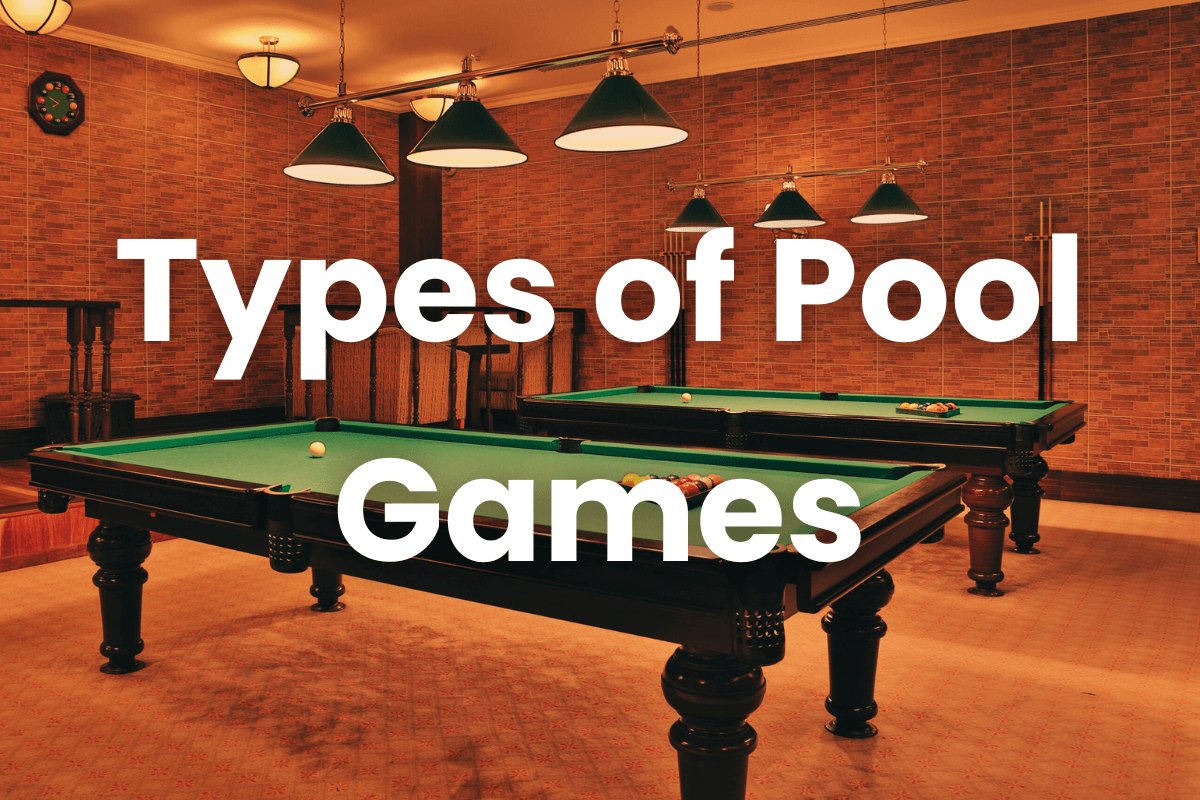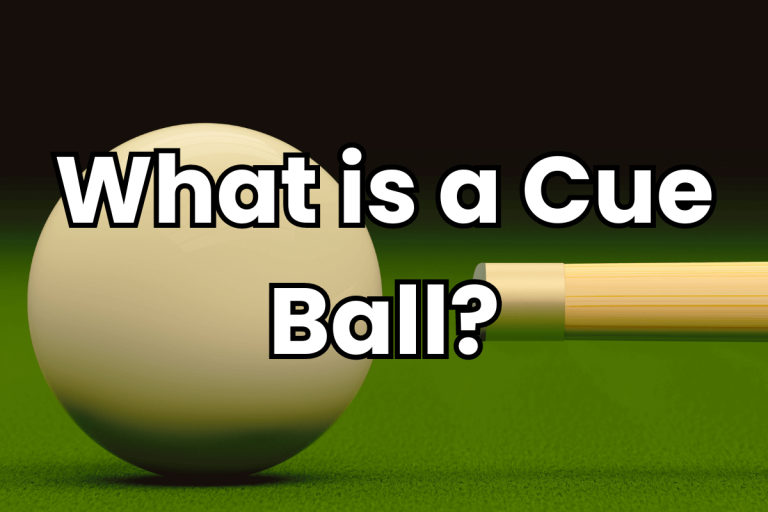Types of Pool Games | Master Your Skills and Strategy (2024)
Pool games’ rich history and global appeal have captivated enthusiasts worldwide. This guide delves into the diverse world of pool, showcasing the wide array of games available, from the universally loved 8-ball to the strategic depths of snooker. Whether you’re a seasoned player or a curious newcomer, this exploration of various types of pool games aims to enhance your understanding, skills, and appreciation of this fascinating and skillful sport.
History of Pool Games
The journey of pool games is a fascinating tale of evolution, from its billiards ancestry to the modern-day variations we enjoy. Let’s dive into this rich history.
The Birth of Billiards
Our story begins in the 15th century, with the inception of billiards. Originally an outdoor game similar to croquet, it moved indoors and onto tables. Over time, this laid the foundation for the pool games we know today.
Billiards Transforms into Pool
Fast forward a few centuries, and billiards began morphing into what we now recognize as a pool. This transformation was marked by the introduction of new rules and equipment, like cues and different-sized balls, leading to more strategic and diverse gameplay.
Diversification of Pool Games
As the pool’s popularity surged, so did its variations. Each region began developing its unique versions. From the precise 8-ball to the strategy-rich snooker, these pool games offered something for everyone, expanding its appeal globally.
Types of Pool Games
8-Ball Pool: Understanding the Basics
8-Ball Pool stands as the cornerstone of the pool world, beloved for its simplicity yet intriguing complexity. Let’s break down its basics, strategies for beginners, and advanced insights.
Rules and Objectives
The heart of 8-ball lies in its straightforward objective: pocket your set of balls (solid or stripes) and then legally pocket the 8-ball to win. The game starts with a break shot, and players take turns, strategizing to pocket their specific group of balls, while avoiding fouls like sinking the cue ball or potting the 8-ball prematurely.
Beginner Strategies
For beginners, mastering 8-Ball starts with the basics:
Cue Control: Focus on your grip and stance. A stable and consistent cue action is vital.
Shot Selection: Opt for simpler shots initially. Positioning for the next shot is key.
Rule Familiarity: Know the rules thoroughly to avoid common fouls.
The Dynamic World of 9-Ball Pool
9-Ball Pool, known for its fast pace and dynamic gameplay, presents a different challenge from the more traditional 8-Ball. Let’s explore the nuances of 9-Ball, compare it with 8-Ball, and delve into advanced techniques for mastering this exciting game.
9-Ball Pool Rules
The objective of the 9-ball is to pocket the 9-ball legally; however, players must shoot the balls in numerical order, starting from the 1-ball. The game begins with a break shot, and the player must hit the lowest-numbered ball on the table first. A key aspect is that any ball can be pocketed during the shot as long as the lowest-numbered ball is hit first. Fouls occur when the cue ball is pocketed or the lowest-numbered ball isn’t hit first, giving the opponent ball in hand.
Contrasting Strategies with 8-Ball
While 8-Ball is about pocketing a specific group of balls, 9-Ball is a sequential game that requires a different strategic approach:
- Speed and Flow: 9-Ball is generally faster-paced. Players must adapt to a more fluid and dynamic style.
- Shot Planning: Unlike 8-Ball, where you may have multiple ball options, 9-Ball requires you to focus on the next ball in sequence, demanding precise position play.
- Safety Play: Effective safety play in 9-Ball can force your opponent into difficult shots or fouls, a critical tactic not as prevalent in 8-Ball.
Advanced Techniques for 9-Ball Mastery
For those looking to excel in 9-Ball, consider these advanced techniques:
Break Mastery: A powerful and strategic break in 9-Ball can set the tone for the entire game. Practice different break techniques to control the cue ball and optimize the ball spread.
Bank and Kick Shots: Given the sequential nature of 9-Ball, mastering kick (rebounding off rails) and bank shots (bouncing off rails into pockets) can significantly elevate your game.
Pattern Play: Advanced players think several shots ahead, planning the route around the table to minimize movement and set up for the 9-ball.
The Challenge of Straight Pool
Straight Pool, a test of endurance and precision, stands out in the pool world for its unique challenges and rich historical significance. Let’s explore the intricacies of Straight Pool’s rules and gameplay, and appreciate its place in pool history.
Rules and Gameplay
In Straight Pool, also known as 14.1 Continuous, players aim to reach a predetermined number of points, typically 150, to win the game. Each legally pocketed ball counts for one point. The key rules are:
- Racking: The game starts with a standard rack of 15 balls. The first player breaks.
- Continuation of Play: After a player pockets a ball, they continue to shoot until they fail to legally pocket a ball or commit a foul.
- Reracking: When only one ball remains on the table, the other 14 balls are reracked, leaving the top spot empty. Play continues with the player trying to pocket the remaining ball and break into the new rack.
Historical Significance
In the mid-20th century, Straight Pool was the dominant game in the professional pool, embodying the essence of the sport. This game emphasizes skill and strategy over luck, with players crafting runs of several shots, showcasing their precision and planning. Straight Pool has been the stage for some of the most legendary figures in the pool, with epic performances and record-breaking runs.
One-Pocket Pool: A Tactical Game
The one-pocket pool is a strategic variant of the pool that emphasizes precision, patience, and tactical acumen. This game, often a favorite among seasoned players, requires a thoughtful approach and a deep understanding of defensive play. Let’s delve into the basics of the One-pocket Pool.
Basics of One-Pocket Pool
The fundamental rules of One-Pocket are as follows:
- Objective: Each player is assigned one of the two corner pockets at the same end of the table. The goal is to pocket 8 balls in your assigned pocket before your opponent does in theirs.
- Gameplay: Players can shoot at any ball on the table, but only balls pocketed in their designated pocket count towards their score. If a ball is pocketed in the wrong pocket, it remains pocketed.
- Turns and Fouls: Players continue shooting as long as they legally pocket a ball. Fouls (like scratching the cue ball) result in a penalty of one point, and the opponent receives ball-in-hand behind the head string.
Snooker: The International Favorite
Snooker, a distinguished cue sport with a global following, offers a different flavor compared to traditional pool games. Renowned for its strategic depth and precision, snooker has captivated players and audiences worldwide. Let’s explore the fundamentals of snooker, focusing on its rules and scoring system.
Introduction to Snooker
Snooker is played on a larger table than a pool, typically 12 feet by 6 feet, with smaller pockets and balls. It combines elements of skill, strategy, and finesse, and is known for its distinctive red and colored balls. Originating in the British Army in the 19th century, snooker has evolved into a highly competitive professional sport with major international tournaments.
Key Rules of Snooker
The basic rules of snooker include:
- Balls Used: The game uses 21 balls: 15 reds, 6 colored (yellow, green, brown, blue, pink, and black), and a white cue ball.
- Objective: Players aim to score more points than their opponent by potting balls in a specific sequence.
- Sequence of Play: Each turn begins by potting a red ball, followed by a colored ball. The colored balls are returned to their spots on the table until all reds are potted. After that, the colored balls are potted in ascending order of their value (yellow to black) without respotting.
Scoring in Snooker
Scoring in snooker is based on the value of the balls:
- Red Balls: Each red ball potted is worth one point.
- Colored Balls: Each colored ball has a different value – yellow (2 points), green (3), brown (4), blue (5), pink (6), and black (7).
- Fouls: Fouls can occur for various reasons, like failing to hit a ball or potting the cue ball—Fouls award points to the opponent, varying based on the nature of the foul.
Exploring Unconventional Pool Games
The world of the pool is rich with diverse and unconventional games, each offering a unique twist on traditional gameplay. From the strategy-focused Bank Pool to the competitive spirit of Cutthroat and the creativity of Artistic Pool, these variants bring new challenges and excitement. Let’s explore these lesser-known yet captivating pool games.
Bank Pool: A Test of Precision
Bank Pool, a game that tests precision and control, revolves around bank shots – shots where the object ball is pocketed off one or more rails before it drops. The rules are simple:
- Objective: Players aim to legally pocket a set number of balls, usually five, before their opponent.
- Gameplay: Each ball must be banked (no direct shots), and players often call their shots, specifying the pocket and the path the ball will take.
Cutthroat: A Battle of Survival
Cutthroat is a dynamic and competitive game, especially popular in social settings and among groups. It involves three players, each assigned a group of balls (1-5, 6-10, 11-15). The rules are straightforward:
- Objective: The aim is to be the last player with at least one of your balls on the table.
- Gameplay: Players take turns, and if you sink an opponent’s ball, you continue playing. If you sink your own, it’s a foul, penalizing your game.
Artistic Pool: The Art of Trick Shots
Artistic Pool is all about creativity, skill, and flair. Often likened to the pool version of figure skating, it involves executing complex trick shots. Key aspects include:
- Objective: Players perform predefined shots, each with varying difficulty levels and point values.
- Scoring: Players are scored based on their success in executing these shots, with higher points for more complex maneuvers.
Conclusion
In our journey through the world of pool, we’ve discovered the strategic depths of 8-Ball and 9-Ball, the endurance test of Straight Pool, the tactical nuances of One-Pocket, the international allure of Snooker, and the unique thrills of Bank Pool, Cutthroat, and Artistic Pool. Each game offers its blend of challenge and enjoyment. I encourage you to dive into these diverse types of pool games, experiencing firsthand the rich blend of skill, strategy, and fun that this timeless sport offers.
FAQs
Is Snooker considered a pool game, and how is it different from the traditional pool?
Snooker is a type of cue sport like pool but differs significantly. It’s played on a larger table with smaller pockets and uses 21 balls. Players score points by potting balls in a specific sequence.
Can beginners play One-Pocket Pool, and what makes it unique?
One-Pocket is challenging but beginners can play it. It’s unique due to its focus on strategic play and defense, where players aim to pocket all their balls in just one designated pocket.
What are some good strategies for winning at Straight Pool?
Effective strategies include planning several shots, mastering precise cue ball control for positioning, and developing a strong defensive game to limit your opponent’s opportunities.
Are there any pool games suitable for large groups or parties?
Cutthroat Pool is ideal for groups, accommodating three players. It’s engaging and competitive, where players aim to be the last with balls remaining on the table, leading to fun and interactive gameplay.
What is Artistic Pool, and how does it differ from other pool games?
Artistic Pool, often known as trick shot pool, is quite distinct from traditional pool games. It involves performing intricate and creative shots with varying difficulty levels. Unlike standard pool games focused on pocketing balls, Artistic Pool emphasizes skillful cue control, imaginative shot planning, and precise execution, making it a showcase of flair and technical prowess.







